Festivals in Umbria: a month by month guide
Bookings For You, Italy, Travel Tips, Umbria, Umbria, Villas in Italy
Like so many of Italy’s regions, Umbria has a jam-packed calendar of festivals each year, celebrating an eclectic mix of music, history, folklore and food! Here’s our complete guide to Umbria’s annual festival season to ensure that you make the most of what to see and do during your Umbria villa holiday. So whatever month of the year you’re planning to visit Umbria, you’ll know what to see and do during your stay.
January Festivals in Umbria
Umbria Jazz (Winter) (1 January)
Many of Umbria’s musical festivals take place during the Summer months, but, not to be outdone, the Winter months also see plenty of musical activity. The most notable of these is the Winter edition of Umbria Jazz, held at the end of December but spilling over into January on New Year’s Day. Concerts are held in the beautiful historic buildings in the heart of Orvieto including the Palazzo del Popolo, Palazzo Soliano, Sala dei Carmin, Palazzo dei Sette, the Teatro Manchinelli and the Duomo. Over 150 performers typically take part, many of whim are ‘in residence’ allowing music lovers to listen to certain performers more than once.
Some of our favourite performances are the jam sessions in the Palazzo dei Sette. These tend to start around midnight and continue into the early hours of the morning. For more information and to book tickets, head to www.umbriajazzi.it.
Epiphany (6 January)
On January 6th, Italians mark Epiphany. This is a religious celebration, officially marking the 12th day of Christmas and commemorating the presentation of the baby Jesus to the Three Wise Men. In Italy, it is also the day on which children will be celebrating the arrival of Befana. According to Italian folklore, Befana is a witch-like old lady who travels around on a broomstick delivering gifts to children and filling their stockings with toys and sweets on the eve of Epiphany. Since it is primarily a religious festival, the best place in Umbria to celebrate Epiphany is in and around Assisi.
Head to Rivotorto di Assisi on the 6th January to enjoy La Fiera della Befana. Many stalls line the streets of this tiny village and there is plenty of entertainment to keep all ages amused including jugglers, street artists and performers. Between 2.30 and 3.00, Befana herself descends from the sky (or at least a paraglider makes his or her descent from Monte Subasio!) and free gifts are distributed to all the children.
Also near Assisi, there is Il Presepe Vivente of San Gregorio d’Assisi. These are beautiful living nativity scenes featuring all the nativity characters.
Procession for Saint Emiliano, Trevi
27th January marks the feast day of Saint Emiliano, the patron saint of Trevi. The day is celebrated with a night time procession of the Illuminata during which a statue of the saint is taken from the Duomo and paraded through the city taking a route that largely marks the original walls of the town. It has followed the same route since 1264. It is accompanied by a procession of floats (cerei) which are prepared by local businesses and artisans.
Festival of Saint Costanzo, Perugia
Two days later on 29 January, Perugia celebrates its patron saint, Costanzo. He was the first bishop and he was decapitated by the Romans in the 3rd century and buried outside the walls of the city. Celebrations commence with a candelit procession (luminaria) to the Church of San Costanzo. Five gifts are brought to the saint – a laurel wreath, candle, the torcolo (a traditional cake), incense and holy wine. The following day, there is a big fair throughout the town, with stalls selling traditional arts and crafts. Here, slices of the torcolo will be distributed to passers by. Any unmarried women may also choose to enter the church to take a look at the lights reflected on his picture here. So the story goes, if the Saint winks, the woman will be married within the year.
February Festivals in Umbria
Valentine’s Day in Terni (14 February)
14th February marks St Valentine’s Day all over the world. However, nowhere is this more celebrated than in Terni. Here, a series of events (Eventi Valentiniani) are held running across the whole of the month of February, starting with an annual re-enactment of Valentine’s life on February 1st when many of Terni’s residents will dress up in historical costumes.
The Umbrian hilltop town of Terni has strong links to St Valentine. Valentine was born here in 226 AD and was martyred 43 years later in Rome in 269 AD. Many stories circulate about him but the most prominent is that he performed clandestine marriage ceremonies for persecuted Christians during the Roman era. He was declared Terni’s patron saint in 1644 (and at the same time was declared the patron saint of lovers) and is buried in the Basilica di San Valentino in Terni.
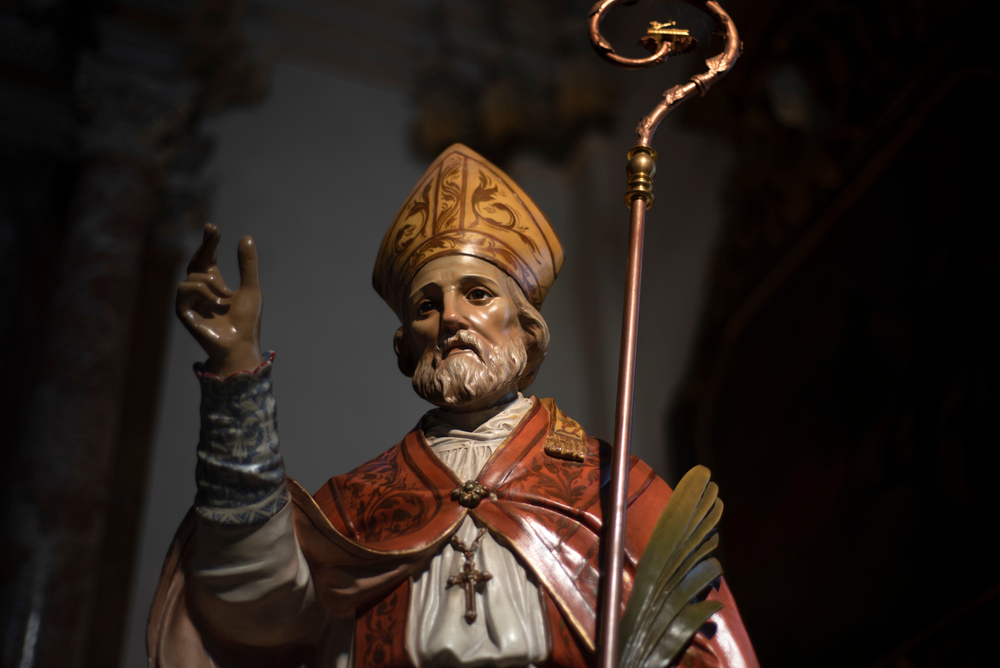
On and around St Valentine’s Day, any couples who are planning to marry in the following 12 months, can exchange their wedding vows in front of the urn of Saint Valentine in Terni and can receive a blessing from the bishop. Many also visit the Basilica or leave messages of love in Saint Valentine’s well.
Terni also celebrates St Valentine with a series of parades, festivals and events. Many residents of Terni opt to take part in a marathon, with runners wearing clothing adorned with hearts and flowers. Street fairs are also held. Chocolate is almost synonymous with Valentine’s Day so it will come as no surprise perhaps that one of these fairs revolves around it – Cioccolentino. This 4 annual four day fair celebrates and promotes chocolate in all its forms with plenty of opportunities to enjoy tastings.
Carnevale in Umbria
February is carnival month in Italy. Whilst the most famous carnivals in Italy certainly aren’t in Umbria, the region still offers a number of carnivals that are most enjoyable and worth seeing. One of the most notable is the Carnevale dei Ragazzi which is held during the last three Sundays before Shrove Tuesday or Mardi Gras. On each of these weekends, elaborately decorated floats make their way through the streets of Foligno. Other parades can be found in Orvieto, Acquasparta and Assisi. Also of note is the Burlesque Carnival Wedding in Sannicandro and the carnival in Spoleto.
Black Truffle Fair, Norcia
For those looking for an event with a foodie flavour, head to Umbria at the end of February or beginning of March when the annual Mostra Mercato del Tartufo Nero di Norcia takes place.
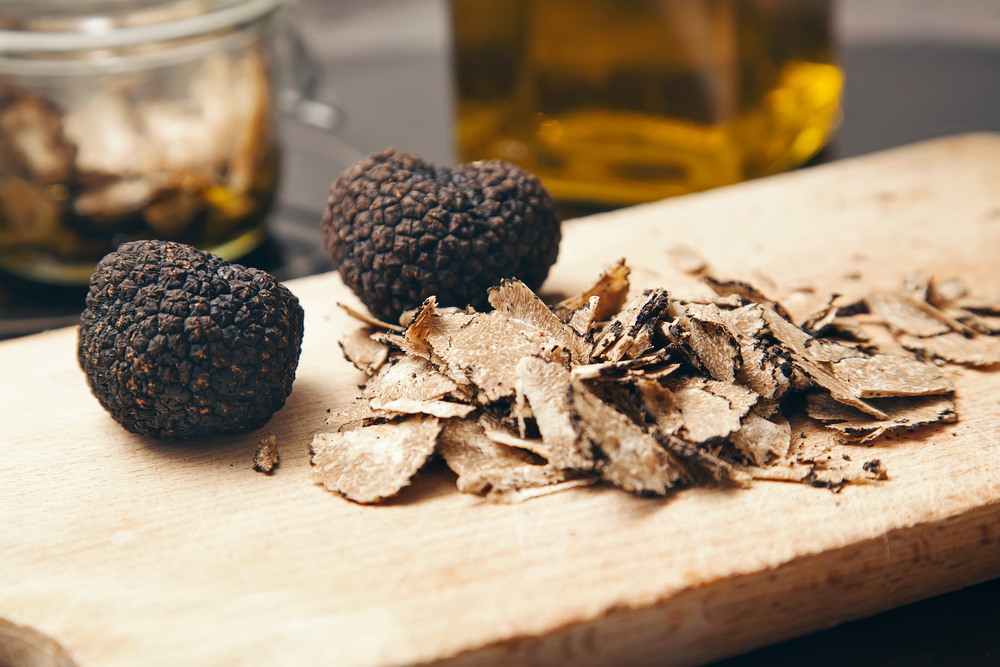
This event celebrates the famous black truffle. With around 100 exhibitors each year, whilst the truffle takes centre stage at the fair, it does also include other regional products such as the IGP prosciutto of Norcia and the IGP Lentil of Castelluccio di Norcia. The fair includes parades, tastings and cooking demonstrations as well as plenty of opportunities to buy this prized foodstuff.
Olive and Bruschetta Festival, Spello
Traditionally on the third Sunday in February, this event, not surprisingly, offers the chance to sample olives, olive products and bruschetta as well as a number of other locally produced foodstuffs and goods. Entertainment is provided in the form of music and dancing and there is a parade of farmers that makes its way through the town on impressively decorated tractors.
March Festivals in Umbria
Eurochocolate, Perugia
Once an annual chocolate festival held in Perugia each October, Eurochocolate has become so popular that it now also takes place each March and April too. It includes plenty of opportunities to enjoy chocolate making demonstrations and tastings. Find out more or buy your tickets at www.eurochocolate.com.
La Festa degli Satuti, Fossato di Vico
This event commemorates the publication of ancient Medieval statutes in 1386 that regulated life inside the castle for the next 500 years. Participating in this event is like stepping back in time. The festival recreates life back in the 14th century. People dress up in historical costumes and scenes are created throughout the town to transport you back hundreds of years.
Easter in Umbria
Italy remains a deeply religious country with around 70% of the population estimated to be Christian (with the vast majority of these being Roman Catholic). Unsurprisingly therefore, Easter sees a number of religious events for visitors to participate in and enjoy. Umbria’s seventh largest town – Assisi – is an important town amongst Christians, many of whom make a pilgrimage here thanks to its links with St Francis.
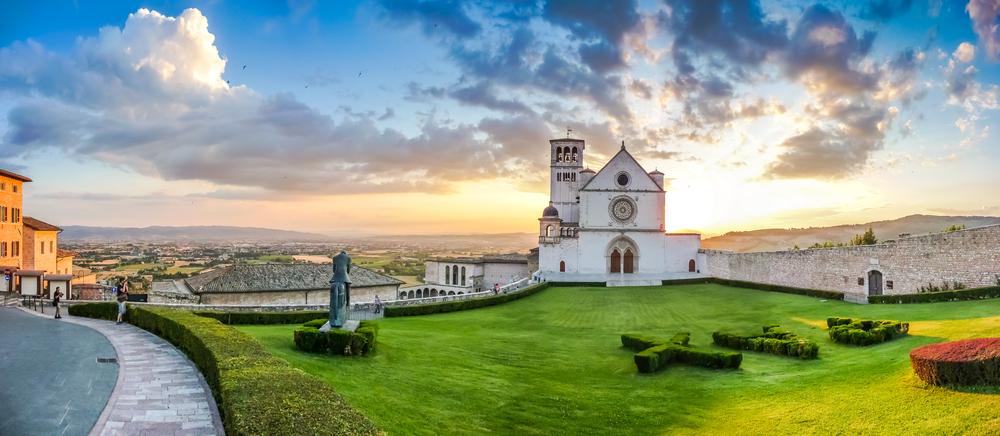
One of the most colourful festivals in Assisi over the Easter period is the Good Friday Procession, attended by the town’s religious guilds dressed in their colourful costumes. However, also not to be missed is the evening Processione del Cristo Morto, a procession of barefooted and hooded penitents through the torch-lit Medieval streets which is rather spectacular.
Another Procession of the Dead Christ takes place in Gubbio. At the head of the procession here are hooded and robed confreres playing the battistrangole (an instrument whose sound is almost like that of scrap metal). They are followed by others carrying skulls to symbolise Golgotha along with symbols of the Passion. In turn come the figures of the Dead Christ and Our Lady of Sorrows whilst behind them are the cantors of the Miserere.
Plenty of other smaller events will take place all over Umbria at Easter time.
Estate Nursina, Norcia
Typically held around 23rd March, Estate Nursina is a celebration by Norcia of its patron saint, Benedict. A historical parade includes well over a hundred participants all dressed in traditional Medieval costumes from each guaita (town quarter) and each castello (surrounding village). The main piazza will be the focus point for much music and dancing as well as for an archery competition.
April Festivals in Umbria
Tulip Festival, Castiglione del Lago
Typically running from mid April each year for a couple of weeks, is Castiglione del Lago’s Tulip Festival, held to celebrate and mark the arrival of Spring. Held in the main piazza of the village, visitors will find much to delight in – colourful displays of flowers, musical entertainment, plenty of activities to enjoy and plenty of stalls promoting local foodstuffs.
Coloriamo i Cieli, Castiglione del Lago
Visit Castiglione del Lago at the end of April or beginning of May when the annual kite festival – Coloriamo i Cieli – takes place. This attracts thousands of kite flyers from all over the world along with a plethora of hot air balloons, all of which fill the skies above Castiglione del Lago with a bright spectacle of colour.
Sagre di Asaparigi, Piegaro
A festival celebrating locally grown asparagus.
May Festivals in Umbria
Corsa all’Anello Festival, Narni
The Corsa all’ Anello (race for the ring) is a 2 week festival that takes place at the end of April and beginning of May each year. The main focus of the festival is a jousting tournament between the knights of Mezule, Fraporta and Santa Maria at the ‘Field of Games‘ in which competitors have to put their lance through a ring hanging down by two wires whilst at full gallop. The event dates back to Medieval times but the modern version that you see today began in 1969. Musicians and performers will re-create the feel of times past whilst local inhabitants will dress in traditional costumes and restaurants will serve up traditional dishes so that visitors are almost transported back to a past era. Find out more at www.corsallanello.it.
Calendimaggio, Assisi
Held across the first Thursday, Friday and Saturday in May, the origins of Assisi’s modern Calendimaggio date back to 1954. In reality, its origins probably date much further back, possibly echoing pagan practices that celebrated the arrival of spring and the renewal of the life cycle. It also has roots in Medieval times when Assisi was divided in two – the ‘Upper Part’ – Parte de Sopra – and ‘Lower Part’ – Parte de Sotto – belonging respectively to the two rival Fiumi and Nepis families. During this period, there were constant battles between the two houses however the habit of celebrating the Spring festival would always continue.
These days, the Calendimaggio is a lively and exciting event. The nobles of the city are represented by the Parte de Sopra in the upper neighbourhoods of Assisi and are made up of three houses (Porta Perlici, Porta San Rufino and Porta Mojano). In contrast, the Parte de Sotto represents the simpler people of the city. They are located in the lower neighbourhoods of Assisi, composed of the houses of Porta San Giacomo, Porta San Francesco and Porta San Pietro.
These two rival camps compete in a series of contests comprising of songs, games and plays. And then, on the final evening of the festival, the Madonna Primavera, is elected. And of course, as is so often the case with an Italian festival, all this is accompanied by the opportunity to enjoy and savour plenty of the region’s culinary specialities, not least the delicious porchetta (roast pork flavoured with fennel).
Festa dei Ceri, Gubbio (15 May)
The Festa dei Ceri in Gubbio is, in our opinion, one of the most adrenaline-filled events in the Umbrian calendar – thanks to the treacherous yet traditional ‘ceri’ race in the late afternoon. ‘Ceri’ are wooden candles, standing 5 metres high and weighing between 300 and 400 kg. They’re carried vertically by their bearers – the ‘Ceraioli’ – who are only allowed to carry them for a maximum distance of 70 metres due to their immense weight.
Each candle is mounted with a statue of either Saint Ubaldo (protector of Bricklayers), Saint Antonio Abate (protector of farmers, and students) or Saint Giorgio (protector of Milliner’s shops). Supporters of each Ceraioli will dress in the appropriate colours – yellow for Saint Ubaldo, black for Saint Antonio and blue for Saint Giorgio. As people gather in the main square in Gubbio, it becomes awash with these three colours.
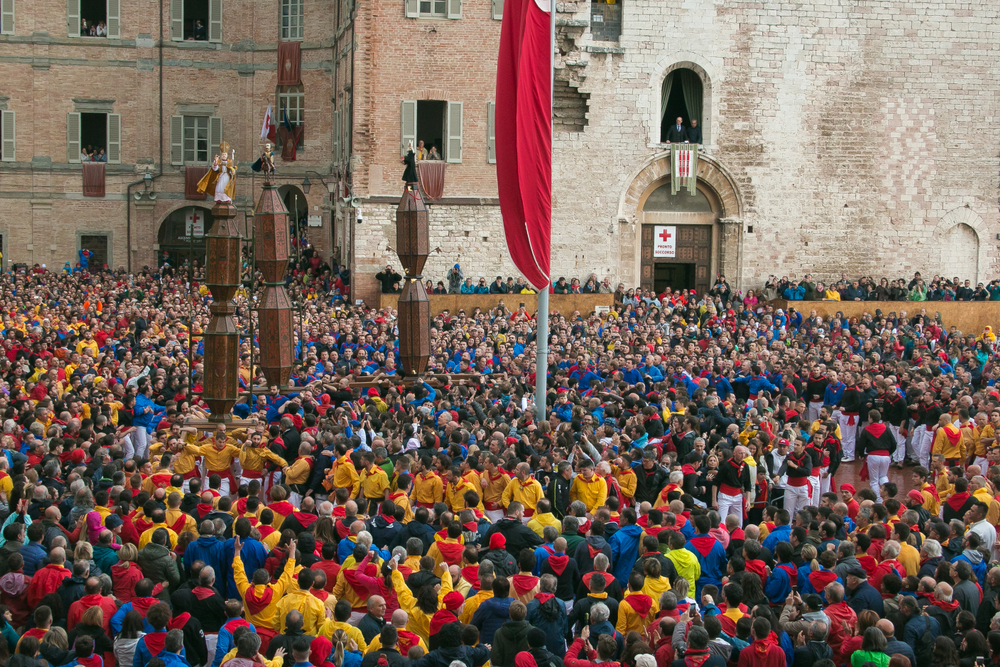
On the morning of the 15th May, a Ceraioli is nominated to lead the three teams who have to transport the wooden candles through the narrow streets of Gubbio and uphill to the Basilica of St. Ubaldo, located on the top of Mount Ingino. Although often referred to as a race, participants must actually stay in the order in which they started throughout.
Palio della Balestra, Gubbio
The Palio della Balestra is a crossbow competition held on the last Sunday of May each year. The event dates as far back as 1410. Participants will come from clubs in Gubbio and Sansepolcro to compete and the winning archer will be presented with a banner created by a notable artist. The event culminates with a procession through Gubbio’s torch lit streets and an impressive display of flag throwing. (There is a return match in Sansepolcro on the second Sunday of September).
Infiorata, Spello
The picturesque hilltop town of Spello is filled with an abundance of flowers whatever time of year you visit. 365 days of the year, window baskets spill over with vibrant, colourful flowers that bring a permanent rainbow of colour to Spello’s cobbled streets.
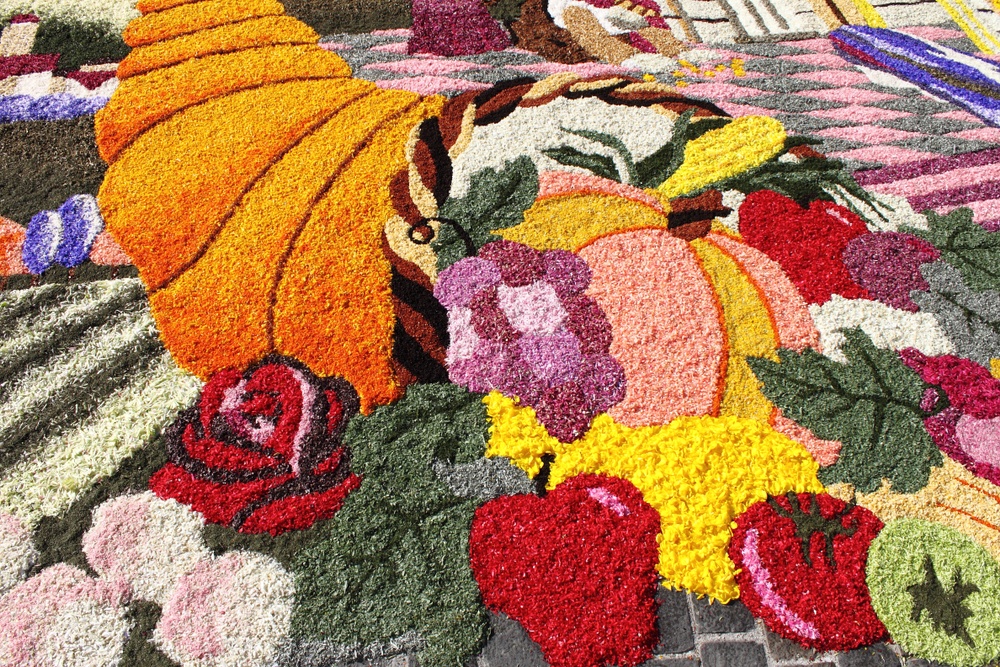
However, these displays are always most impressive at the end of May each year when Spello celebrates the Infiorata of Corpus Domini. Quite simply, this is an astonishing floral spectacle, during which the streets of Spello are literally paved with incredible floral displays. Artists and local residents all start work on their masterpieces at the same time on the Saturday, working through the night to ensure that their creations are finished in time to be judged on the Sunday. Awards are then distributed for the most spectacular creation.
Palio dell’ Oca, Orvieto (30 May)
Dating back to Medieval times, the Palio dell’ Oca was traditionally a jousting tournament that saw knights competing on horseback to take the heads off a couple of geese that hung down from ropes. These days, things are a little tamer. Competitors now compete to grab a white handkerchief and to place it in the appropriate basket. Prizes are awarded to the winning contrada (Palio di Contrada) as well as to the best knight (Paliotto Individuale). Events are preceded by the blessing of the horses and knights in the Piazza Belisario and Piazza della Repubblica as well as by a historical procession and flag throwing performance.
June Festivals in Umbria
Giostra della Quintana, Foligno
The first Quintana dates as far back as 1613, but the modern version that you can enjoy today dates back to 1946 and is held each June. This is the challenge – Sfida – and is followed up in September by the Rivincita (re-match).
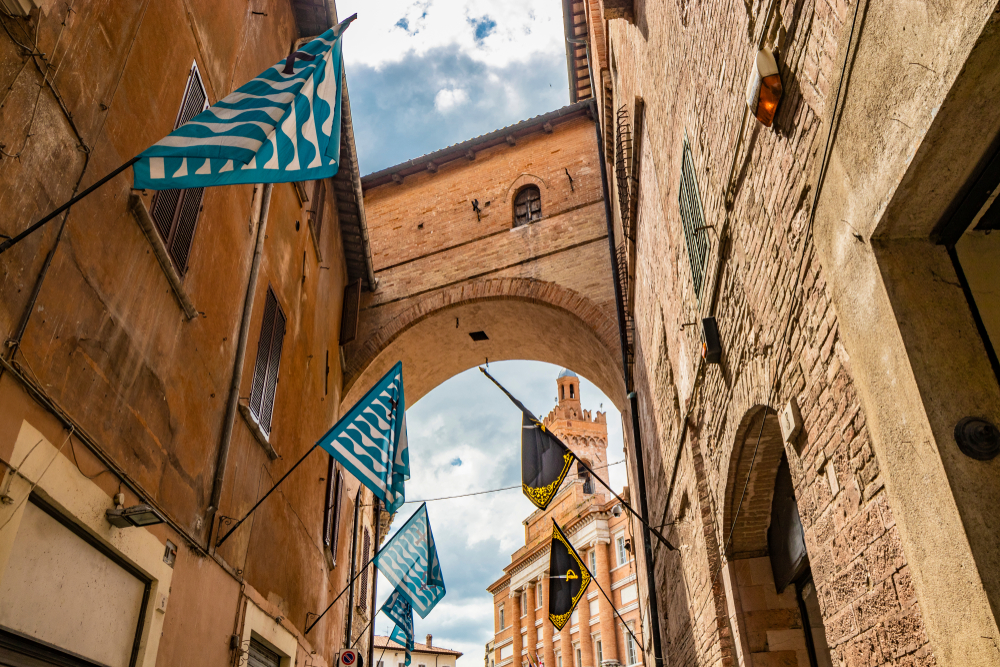
The Giostra della Quintana pits ten city districts against one another. Contestants compete against each other in a jousting tournament, aiming to spear a gold ring from the wooden outstretched arm of the ancient Roman god of war, Mars. The winner is the knight who successfully spears three gold rings in the quickest time with no penalties. Each time the riders make their way around the Campo de li Goichi in Foligno, the ring (quintanone) gets smaller – 6cm to 5.5 cm to just 5 cm.
Over the tournament weekend, the town of Foligno is transformed by the festivities, with hundreds of residents dressing up in historical costumes for a grand parade. Not only that, but in the fortnight preceding the event, the ten flagship taverns of each of the competing districts serve up an array of traditional seventeenth century Umbrian food washed down with the best local wines.
Festival dei due Mondi, Spoleto
One of Umbria’s most famous music festivals is the Festival of Two Worlds (Festival dei Due Mondi) which has been held annually in Spoleto from the end of June through to the beginning of July since it was founded in 1958. The intention behind the original event was to showcase both American and European culture within one harmonious event, emboldened by a sister event held in South Carolina, USA. These days, the Festival dei Due Mondi offers a wealth of jazz, opera, and classical music performances as well as dance, theatre and cinema events all run across a 3 week period.
Mercato delle Gaite, Bevagna
The Mercato delle Gaite is an annual fair that takes place at the end of June in Bevagna. Unlike so many of Umbria’s Medieval festivals, this one avoids the traditional jousting tournament and instead focuses on remembering and showcasing the social and commercial activities of life in Medieval times.
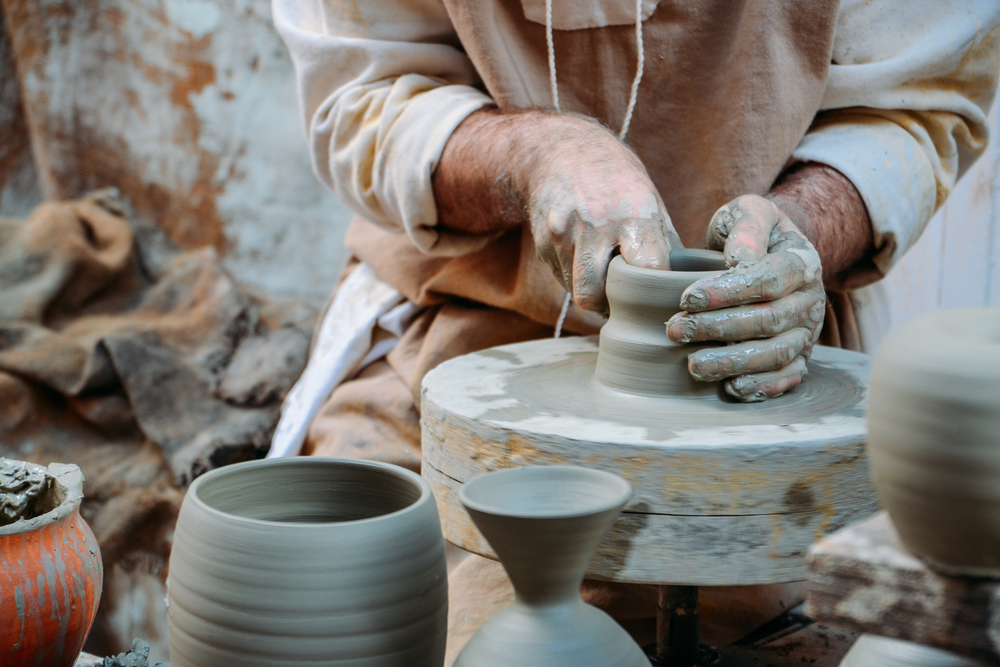
The event celebrates the traditions and trades of Bevagna’s fascinating past, bringing to life what it would have been like to live in the 14th and 15th centuries. The skills on show include silk spinning, glass making, candle making and more. During the festival, Bevagna’s streets are strewn with hay and in what is almost like a piece of incredible piece of live theatre, residents re-create what life would have been like all those years ago with market stalls, inns, blacksmiths and potters all selling their wares. And, as with so many of Italy’s festivals, it goes without saying that it’s also a chance to try the very best of the delicious traditional local cuisine washed down by some of the very best local wines!
July Festivals in Umbria
Umbria Jazz Festival, Perugia
Umbria Jazz has been held annually in Perugia every July since 1973. The event is now one of the leading Jazz festivals in the world and over the past few years has attracted international music megastars such as Elton John, Alicia Keys and Eric Clapton. The event comprises a real mix of music concerts, genres and street performers but the emphasis is first and foremost on jazz. The biggest names tend to perform at the Santa Giuliana Arena whilst more traditional jazz performers can be found at the Morlacchi Theatre. The main square in Foligno – Piazza IV Novembre – will also host a number of concerts each year.
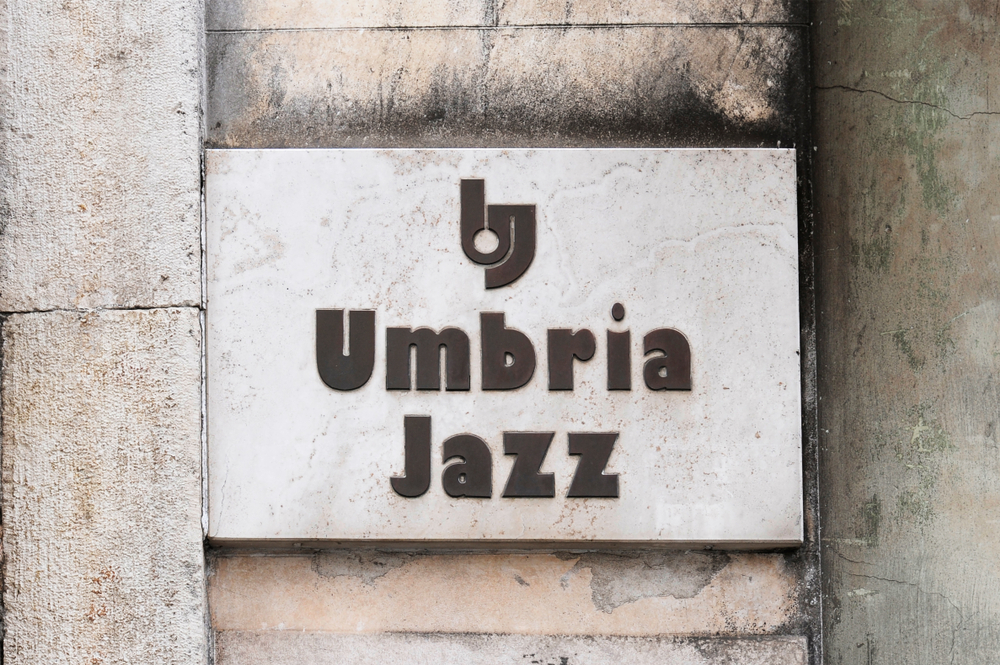
Trasimeno Blues
There is something for all music lovers in Umbria in the Summer. Attracting both Italian and international performers, this festival holds a series of performances in the towns and villages of Lake Trasimeno including Passignano sul Trasimeno, Panicale, Castiglione del Lago. Blues music is also mixed with jazz and funk styles.
Festival delle Nazioni, Citta di Castello
This festival typically runs across July and August. Each year, it revolves around a specifically chosen country. In 2022, it was Spain. Concerts and performances are held in the museums, churches and theatres of Citta di Castello and the wider area with a focus on traditional chamber music.
Gubbio Roman Theatre season
Gubbio’s Roman theatre dates back to the 1st century BC and it would have been the second largest theatre in the Roman Empire behind the theatre of Marcellus in Rome. From mid July to the end of August, visitors are treated to some terrific open air theatre performaces here. Sat below Gubbio’s centre, it’s also a great setting to admire views of the town itself.
August Festivals in Umbria
Todi Festival
At the end of August and beginning of September each year, the Todi Festival takes place, showcasing and combining a number of different creative genres from theatre to dance and from music to literature. Since it was set up in 1987 by Silvano Spada, its reputation has grown immeasurably and it is now renowned for its creativity and experimentation. It attracts both Italian and international writers, directors and performers.
Performances take place outdoors, in Todi’s streets and squares including its central Piazza del Popolo and the steps of the Church of San Fortunato, as well as indoors in the beautiful theatre designed by Carlo Gatteschi. Other locations on the outskirts of the village will also be used, thus increasing awareness of Todi and its environs amongst visitors.
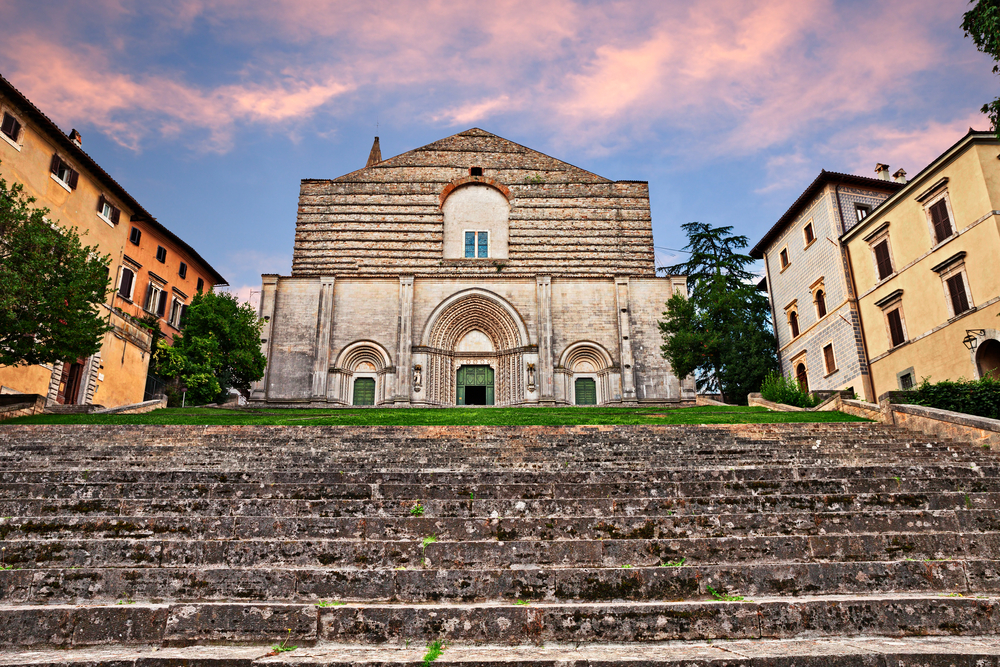
Running simultaneously are a series of other events from dance and acting workshops to guided tours, food and wine tastings. Many historical buildings and churches will also be opened specifically for the duration of the festival.
September Festivals in Umbria
I Primi d’ Italia, Foligno
Taking place annually at the end of September and beginning of October, I Primi d’Italia is a celebration of pasta, gnocchi, risotto and other Italian foods that are so dominant in Italy’s first course cuisine. The event attracts chefs from all over the world, keen to demonstrate their culinary talent and flair. There is the opportunity for visitors to enjoy masterclasses, cooking lessons, talks, tastings and shows. Entry is free.
Giostra della Quintana, Foligno
Three months after the first round of the Foligno Quintana (the challenge – Sfida) comes the Rematch – Rivincita. Yet again, the two weeks leading up to the jousting tournament will see the ten taverns open their doors to serve up traditional Umbrian fare dating back to the 17th century. The night before the tournament, there is then another huge historical parade, featuring as many as 800 participants. And then on the day of the tournament itself, the ten knights will again gallop their way around the 754 metre track to try and successfully spear the three rings which decrease in size each time.
October Festivals in Umbria
Feast of St Francis, Assisi
Held annually on 4 October, the Feast of St Francis is a major day in the Christian pilgrimage calendar, attracting visitors from all over Italy and further afield. Each year, a different region of Italy is chosen to renew the oil that continually burns in the lamp in the Tomb of St Francis. Later, plenty of music, dancing and food provides a celebratory end to the day. The speciality to be enjoyed is mostaccioli (biscuits made with almonds and honey) and pancaciato (bread made with cheese and raisins).
Eurochocolate, Perugia
This annual chocolate festival held in Perugia is definitely one of our favourite Umbrian festivals. There is a reason why this event takes place here. The city of Perugia is famous for its chocolate, thanks to the Perugina company whose Baci chocolates are widely exported.
Just like the March event, the October festival includes tasting tours, chocolate making demonstrations and cooking classes. Giant chocolate sculptures are also created and on display. Previous designs have included Rome’s Colosseum and Pisa’s leaning tower to give you an idea of the complexity of them!
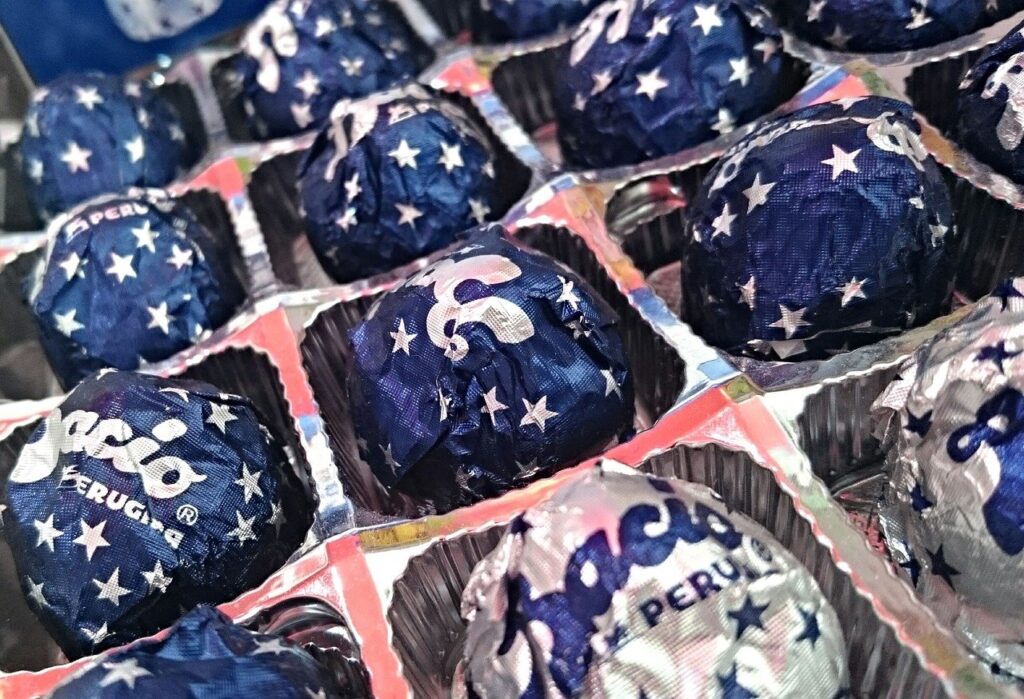
Saffron Fair, Cascia
The last weekend in October sees the Saffron Fair take place in Cascia, a small town situated about 20 km from Norcia in the South East of Umbria. Timed to take place after the saffron has been picked, this festival showcases foodstuffs made using this precious commodity. Perhaps it’s not surprising how expensive saffron can be when you realise that it takes the stigmas of 200 saffron crocus flowers to produce just a single gram of saffron! Flowers are picked early in the morning when the corollas of the flower are still closed, thereby running less risk of damaging the stigmas and pistils in the picking process. Petals and the external parts of the flower are then removed and what is left is toasted.
November Festivals in Umbria
Fiera dei Morti, Perugia
Not as gruesome as it sounds, the Fiera dei Morti (Fair of the Dead) is a five day fair featuring over 500 stallholders selling everything from books to leather goods and from clothing to food. It does have its roots in Medieval times when it would have been a crucial time for people to stock up ahead of the Winter months. There is plenty on offer to keep the children entertained too with an amusement park and fairground.
December Festivals in Umbria
Gubbio Christmas Tree
December will give visitors to Italy plenty of opportunities to see live nativity scenes (presepio) that take place all over the country. The first ever living nativity was staged by Francis of Assisi in the early 13th century in the village of Greccio. We particularly recommend trying to see the live nativity in Foligno.
However, nothing quite says the magic of Christmas like a giant sparkling Christmas tree illuminating the night sky! And nowhere will you see one bigger than in Gubbio. Every December, the World’s Largest Christmas Tree constructed from over 3,000 lights and standing over 650 metres high dominates the vast area of Mount Ingino, overlooking the town.
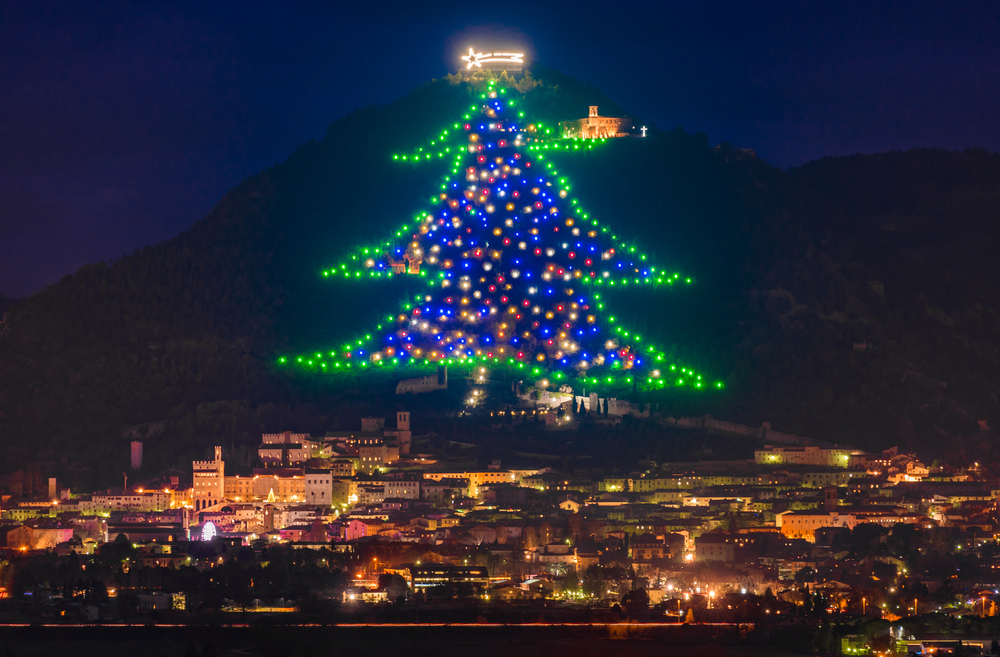
Ri Fauni a Norcia
On 9 December each year, Norcia hosts a festival of bells, celebrating the moving of the Madonna from Nazareth to Loreto on this night in 1291.
The sheer wealth of festivals in Umbria shows that there is never a bad time to explore and discover this beautiful region of Italy. Check out the villas in Umbria available from Umbria villa rental specialists for your stay.


